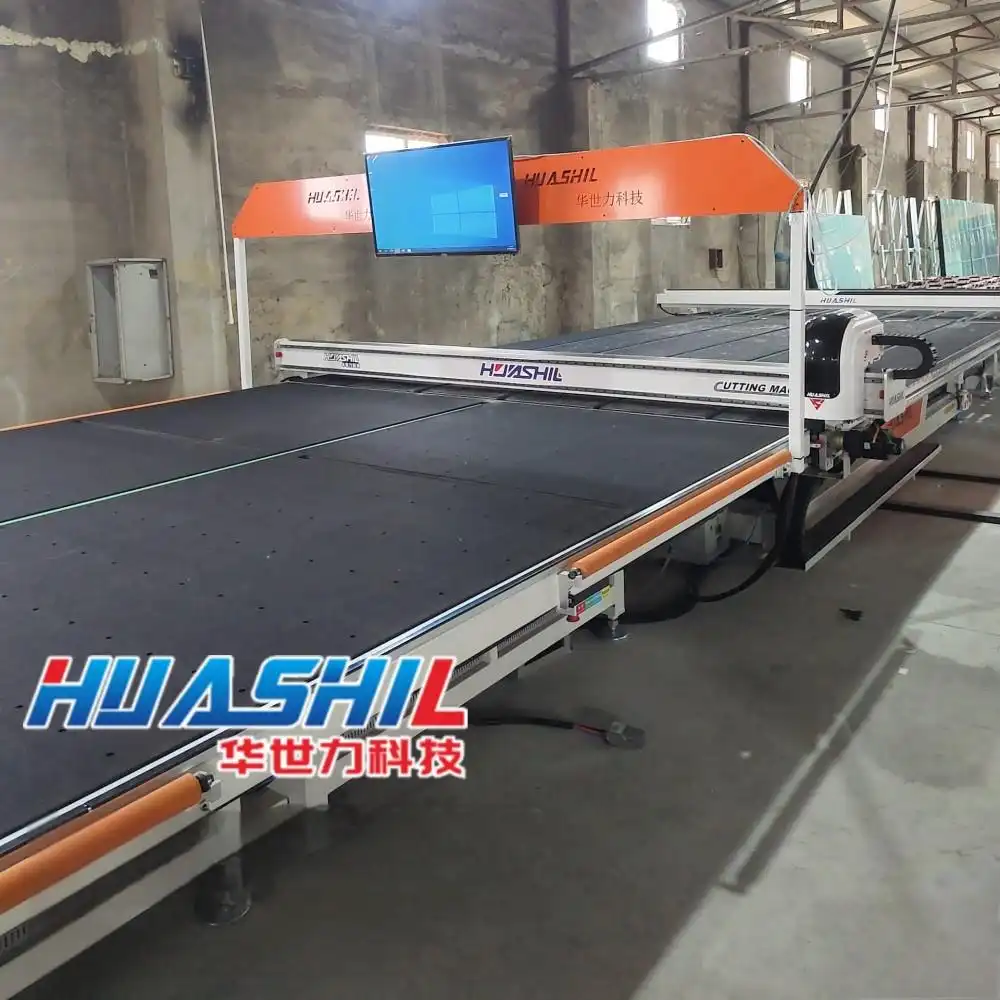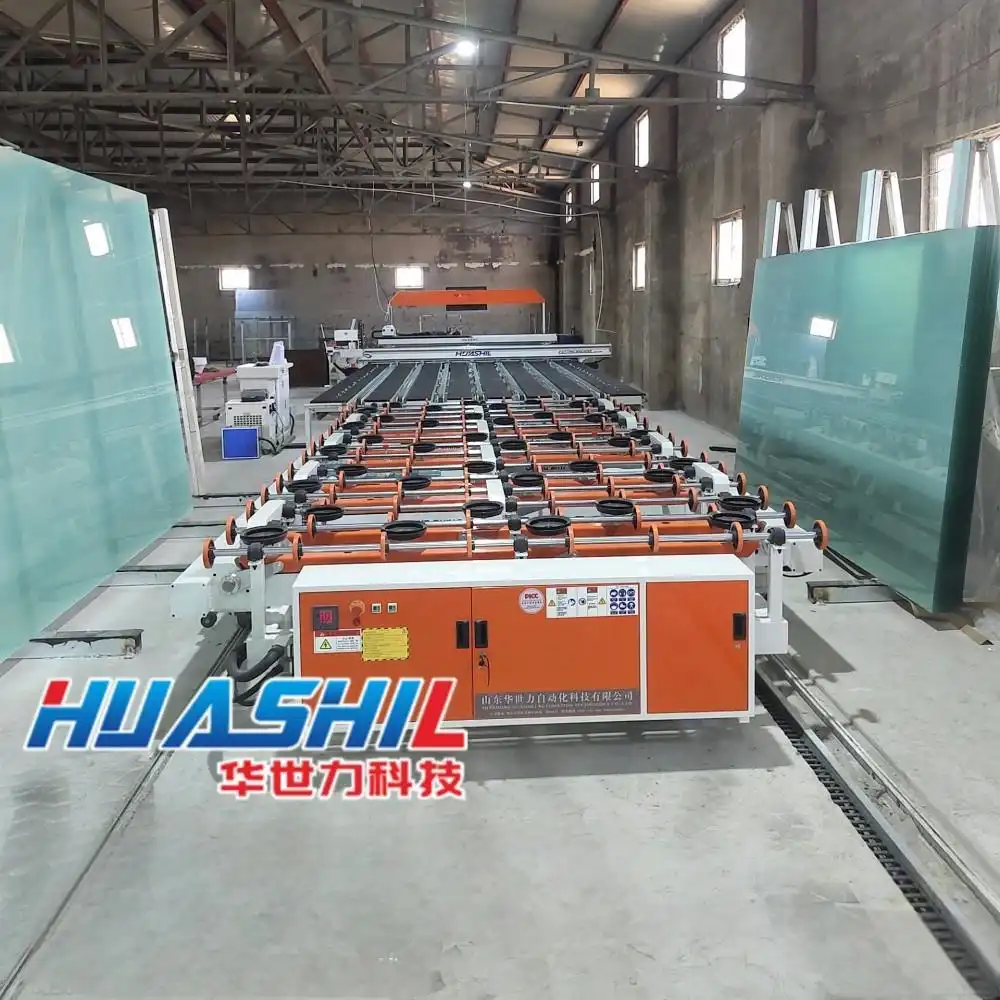Glass manufacturing requires precise and careful handling of a material that presents unique safety challenges. Modern automatic glass cutting lines incorporate numerous safety features to protect workers and ensure efficient production. This article explores the essential safety components integrated into contemporary glass cutting assembly lines, their importance in preventing accidents, and how they contribute to overall operational efficiency.

How Do Emergency Shutdown Systems Protect Workers in an Automatic Glass Cutting Line?
Advanced Emergency Stop Mechanisms
Emergency shutdown systems serve as the first line of defense in automatic glass cutting lines. These systems feature strategically placed emergency stop buttons throughout the production floor that, when activated, immediately halt all machine operations. The placement of these buttons follows strict guidelines ensuring they are within easy reach of operators in all work positions. Modern automatic glass cutting line installations include wireless emergency stop systems that allow workers to trigger shutdowns remotely in case of dangerous situations. These systems are typically integrated with visual and audible alarms that alert all personnel when an emergency stop has been activated, ensuring everyone in the vicinity is aware of the potential danger. The redundancy built into these systems—with multiple activation points and backup power supplies—ensures that safety is maintained even if individual components fail.
Automated Fault Detection Systems
Today's automatic glass cutting lines incorporate sophisticated fault detection capabilities that can identify potential hazards before they become dangerous. These systems continuously monitor operational parameters such as pressure levels, motor temperatures, cutting tool integrity, and position sensors. When abnormal conditions are detected, the control system can automatically initiate a controlled shutdown of affected components or the entire line. Machine learning algorithms have enhanced these systems' ability to recognize patterns that might indicate impending failures, allowing for preventive maintenance rather than emergency responses. For instance, if a glass positioning mechanism shows signs of irregular movement, the automatic glass cutting line may flag this for maintenance while continuing to operate at reduced capacity, preventing both downtime and potential safety incidents.
Safe Restart Protocols
After an emergency shutdown, restarting an automatic glass cutting line is not simply a matter of pressing a button. Comprehensive restart protocols ensure that hazardous conditions have been properly addressed before operations resume. These protocols typically include mandatory inspections of critical components, confirmation that all safety guards are properly positioned, verification that no personnel remain in danger zones, and a sequential restart process that gradually reactivates different sections of the line. The control systems of modern automatic glass cutting lines maintain detailed logs of emergency stops and their causes, facilitating thorough investigation of incidents and continuous improvement of safety measures. The restart sequence often includes testing operations at reduced speeds before returning to full production, giving operators an opportunity to verify that all systems are functioning properly.
What Personal Protection Equipment is Essential for Automatic Glass Cutting Line Operators?

Cut-Resistant Gloves and Apparel
Handling glass presents obvious cutting hazards, making appropriate hand and body protection critical for workers operating around automatic glass cutting lines. The latest generation of cut-resistant gloves combines high-performance materials like Kevlar, Dyneema, and specialized metal-infused fibers to provide protection without sacrificing the dexterity needed for precise operations. These gloves are rated according to standardized cut resistance levels, with most automatic glass cutting line operations requiring level 4 or 5 protection (on a scale where 5 represents the highest resistance). Beyond gloves, operators often wear cut-resistant sleeves to protect forearms during manual handling operations that supplement the automatic glass cutting line processes. Advanced protective apparel now incorporates visibility-enhancing features such as high-contrast colors or reflective elements, helping machine vision systems and other operators more readily identify human presence near moving equipment.
Eye and Face Protection
Flying glass particles and dust present significant hazards to workers' eyes and faces in glass cutting environments. Safety glasses with side shields are the minimum eye protection required, with many facilities mandating more comprehensive protection such as full-face shields during certain operations. Modern eye protection for automatic glass cutting line workers often features anti-fog coatings and scratch-resistant surfaces to maintain visibility in challenging industrial environments. Some facilities have implemented smart safety glasses that integrate with the automatic glass cutting line's control systems, providing operators with heads-up displays showing real-time process information while maintaining protection. Face protection increasingly includes respiratory elements to filter out fine glass dust that can cause long-term respiratory issues if inhaled regularly. Regular eye examinations for workers exposed to glass dust have become standard practice in facilities using automatic glass cutting lines.
Safety Footwear and Hearing Protection
The glass industry presents multiple hazards beyond cuts, including falling objects and high noise levels. Specialized safety footwear with reinforced toes, puncture-resistant soles, and slip-resistant surfaces protects workers from both falling glass sheets and the sharp fragments that might result from breakage. Many automatic glass cutting line facilities require metatarsal guards that extend protection beyond the toes to cover the entire upper foot. Noise levels in glass processing facilities frequently exceed safe exposure limits, necessitating appropriate hearing protection. Advanced hearing protection devices now allow for communication between workers while still reducing harmful noise levels from automatic glass cutting line operations. Some facilities implement noise mapping and monitoring to identify high-exposure areas around automatic glass cutting lines, ensuring appropriate hearing protection requirements are established for different work zones. The integration of these protection elements with other PPE creates a comprehensive safety system that addresses multiple hazards simultaneously.
How Do Automated Handling Systems Reduce Injury Risks in Glass Cutting Operations?
Robotic Loading and Unloading Systems
Manual handling of glass sheets presents significant injury risks, making automation of these tasks a critical safety enhancement. Robotic systems equipped with vacuum suction cups or specialized grippers can safely manipulate glass sheets of various sizes and thicknesses without human intervention. These robotic components of automatic glass cutting lines use advanced sensors to detect proper grip before moving glass, preventing drops and potential shattering. The programming of these systems includes careful acceleration and deceleration parameters to avoid sudden movements that could compromise grip on the glass. Integration between different stations on an automatic glass cutting line ensures smooth transitions as glass moves through various processing stages, eliminating the handoff points where accidents often occur in manual operations. State-of-the-art robotic systems can adapt to different glass types and dimensions automatically, reducing the need for manual adjustments that might expose workers to hazards.
Conveyor Safety Features
Conveyor systems that transport glass between processing stations incorporate numerous safety features to prevent both injuries and product damage. Physical guards prevent worker contact with moving parts while allowing visual monitoring of operations. Automatic glass cutting line conveyors typically include emergency pull cords running their entire length, allowing quick shutdown from any position. Modern systems incorporate pressure-sensitive edges that automatically stop movement if contact is detected, preventing crushing injuries. The spacing and synchronization of conveyor segments in an automatic glass cutting line are carefully designed to prevent glass sheets from colliding or creating jams that might require hazardous manual intervention. Advanced conveyor systems include automatic cleaning mechanisms to remove glass fragments and debris, reducing the need for manual cleaning of potentially dangerous materials.

Vision Systems and Proximity Sensors
Advanced sensing technologies have dramatically improved safety around automatic glass cutting lines by detecting human presence near hazardous operations. Machine vision systems monitor work areas and can distinguish between expected material movements and unexpected human intrusion. Proximity sensors create invisible safety barriers around dangerous equipment, triggering automatic slowdowns or stops when breached. These systems are increasingly integrated with wearable technology that workers use, creating personalized safety zones that move with each individual. The vision systems in modern automatic glass cutting lines can also detect potential quality issues or hazards in the glass itself, such as stress points that might lead to unexpected breakage during processing. This preventive capability reduces not only product waste but also the safety risks associated with unpredictable glass failures. The combination of these sensing technologies creates multiple layers of protection that complement traditional physical safeguards.
Conclusion
Safety features in modern automatic glass cutting assembly lines represent a comprehensive approach to worker protection, combining physical safeguards, advanced technology, and procedural controls. From emergency shutdown systems to personal protective equipment and automated handling mechanisms, these features work together to minimize risks while maintaining productivity. As technology continues to evolve, we can expect even more sophisticated safety innovations that will further enhance the protection of workers in this essential manufacturing process.
Shandong Huashil Automation Technology Co., Ltd. is a leading provider in the glass machinery and mechanical equipment industry, offering high-quality products and comprehensive solutions. With over ten years of export experience, the company boasts a mature R&D team, a reliable source factory, and a professional after-sales service team. Huashil's core services include OEM support, fast delivery, high cost performance, and dependable after-sales service. The company holds complete certifications, ensuring the highest standards of quality and reliability. If you are interested in exploring our products or wish to establish in-depth cooperation, please feel free to contact us at salescathy@sdhuashil.com for more information.
References
1. Smith, J.L. & Johnson, P.R. (2023). "Safety Innovations in Modern Glass Manufacturing." International Journal of Industrial Safety, 45(3), 287-301.
2. Zhang, W., Thompson, K.E., & Reed, A.H. (2022). "Risk Assessment and Mitigation Strategies for Automatic Glass Processing Equipment." Journal of Manufacturing Safety Engineering, 19(2), 142-158.
3. Martinez, C. & Nakamura, T. (2024). "Ergonomic Considerations in the Design of Glass Cutting Assembly Lines." Applied Ergonomics Quarterly, 67, 98-112.
4. Wilson, D.B., Garcia, L.M., & Chen, H. (2023). "Emergency Response Systems in High-Risk Manufacturing Environments." Safety Science, 156, 105893.
5. Patel, S. & Anderson, R.K. (2024). "Machine Vision Applications for Worker Safety in Glass Processing Industries." IEEE Transactions on Industry Applications, 60(1), 426-437.
6. Lopez, A.D., Williams, E.J., & Takahashi, Y. (2023). "Protective Equipment Standards for Glass Industry Workers: A Comparative Analysis." Journal of Occupational Safety and Health, 31(4), 215-229.



